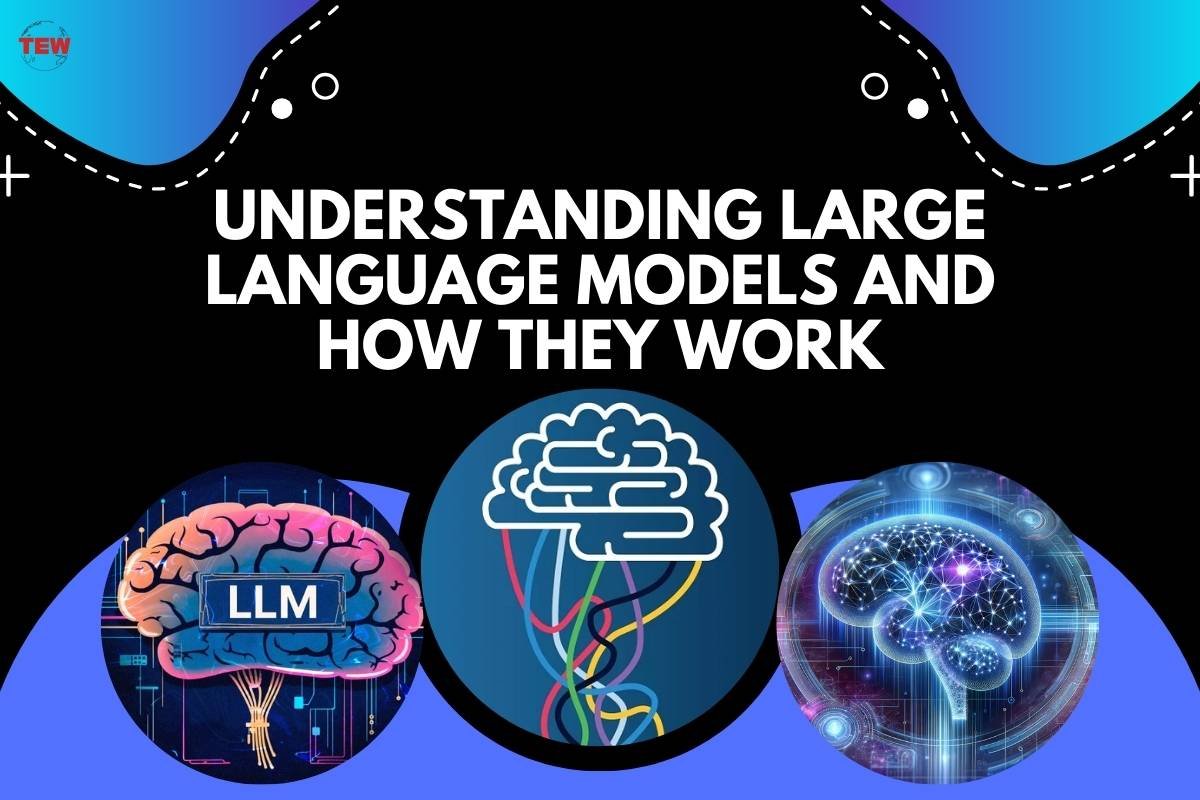Since the popularity and implementation of ChatGPT in our everyday lives, the need to understand and learn more about Large Language Models has become necessary. We use ChatGPT for the smallest of things, be it for generating outlines for something work-related, or asking silly questions for fun. But how does the software do that? ChatGPT is a type of Large Language Model and in this article, we are going to answer the same.
What Are Large Language Models?
Large Language Models (LLMs) are a type of machine learning model that can perform a variety of natural language processing, like generating and classifying text, answering questions in a conversational manner, and translating text from one language to another.
In simpler terms, they are like super-smart virtual assistants that can understand, analyze, and produce written texts, just like humans do. They are advanced types of artificial intelligence that are designed to work with human language. They can help us by answering our questions, explaining things we don’t understand, and even generating new content. We can talk to LLMs using phones or computers. We type or speak our questions, and they give us answers.
History of Large Language Models

These models began with the creation of the first-ever chatbot Eliza in the 1960s. MIT researcher Joseph Weizenbaum designed Eliza. It was a simple program that imitated human conversation. It did this by taking what the user said and forming it into a question, then giving a response using a set of already decided rules. Eliza wasn’t the perfect model, but it marked the beginning of research into natural language processing (NLP) and the development of better and more sophisticated Large Language Models.
Over the years, there have been some important advancements in the field of LLMs. One of these was the creation of Long Short-Term Memory (LSTM) networks in 1997. These networks made it possible to build more powerful and sophisticated neural networks that could handle large amounts of data. Another important development was the introduction of Stanford’s CoreNLP suite in 2010. This suite provided researchers with helpful tools and algorithms to tackle complex tasks in natural language processing, like figuring out the sentiment of a text or recognizing named entities.
In 2011, Google Brain was launched, which provided researchers with access to powerful computing resources and data sets. It also introduced advanced features like word embeddings, which helped NLP systems better understand the meaning of words in context. This paved the way for significant advancements in the field, including the development of Transformer models in 2017. These models allowed for the creation of larger and more sophisticated LLMs, such as OpenAI’s GPT-3 (Generative Pre-Trained Transformer). GPT-3 served as the foundation for ChatGPT and many other amazing AI-driven applications.
How Does Large Language Models Work?

Language Models (LMs) are advanced AI systems that rely on deep learning techniques and large amounts of text data to understand and generate human-like language. These models are usually built using a transformer architecture, such as the Generative Pre-trained Transformer (GPT), which is highly effective in processing sequential data like text. At the core of an LM are multiple layers of neural networks.
What is a Neural Network?
A neural network is a mathematical model made of small computational units that work together to process information, just like the neurons in our brains. Each unit takes in input, performs a calculation, and passes the result to the next unit. By organizing these units into layers, the neural network can learn and make predictions based on patterns in the input data.
- Each layer has its own set of parameters, which can be adjusted or fine-tuned during the training process. This enables the LM to learn and understand the patterns, relationships, and structures present in the input text data.
One key component of LMs is the attention mechanism, which plays a crucial role in enhancing their performance. The attention mechanism allows the model to focus on specific parts of the input data, effectively paying attention to the most relevant information. By doing so, LMs can better understand the context and generate more accurate and coherent responses.
- During the training process, LLMs learn to anticipate the next word in a sentence by considering the words that came before it. They accomplish this by breaking down words into smaller sequences called tokens and assigning a probability score to their occurrence. These tokens are then converted into numerical representations, known as embeddings, which capture the context of the text.
- To achieve accuracy, LLMs are trained on an extensive collection of text, often consisting of billions of pages. This vast amount of data enables the models to grasp grammar rules, understand meaning, and identify relationships between words through techniques like zero-shot and self-supervised learning.
Once the LLMs have been trained on this data, they become capable of generating text by autonomously predicting the next word based on the input they receive.
- They accomplish this by leveraging the patterns and knowledge they have acquired during training. The result is language generation that is coherent, contextually relevant, and adaptable to various natural language understanding (NLU) and content generation tasks.
To improve the performance of Large Language Models, various techniques can be employed. One such technique is prompt engineering, which involves carefully crafting the input prompts to elicit desired responses from the model. Prompt-tuning and fine-tuning are additional tactics that help refine the model by adjusting its parameters and optimizing its performance.
Another approach is Reinforcement Learning with Human Feedback (RLHF), which assists in addressing issues like biases, hateful speech, and incorrect answers that can arise during training. These issues, often referred to as ‘hallucinations’ can occur due to the vast amount of unstructured data used for training the model. RLHF helps to correct and improve the model’s behavior by providing feedback from human evaluators.
Examples of Large Language Models

Many Large Language Models in the market are developed by known companies. Some of the popular LLMs are –
- Developed by OpenAI – GPT3 (Generative Pretrained Transformer 3)
- Developed by Google – BERT (Bidirectional Encoder Representations from Transformers); T5 (Text-to-Text Transfer Transformer)
Types of Large Language Models
There are three types of LLMs –
- Pre-training models – Models such as GPT-3/GPT-3.5, T5, and XLNet are trained using huge amounts of data. This extensive training helps them understand a wide variety of language patterns and structures. These models are great at generating text that makes sense and follows proper grammar on many topics. They serve as a foundation for additional training and fine-tuning, which helps them become even better at specific tasks.
- Fine-tuning models – Models like BERT, RoBERTa, and ALBERT go through two stages of training. First, they are pre-trained on a large dataset to learn general language understanding. Then, they are fine-tuned on a smaller dataset that is specific to a particular task. These models are particularly great at tasks like analyzing sentiment, answering questions, and classifying text. They are commonly used in real-world applications where there is a need for language models that are tailored to perform specific tasks accurately and efficiently.
- Multimodal models – Multimodal models, such as CLIP and DALL-E, are designed to work with different types of data, like images or videos, alongside text. By combining these modalities, these models become more powerful and versatile. They can comprehend how images and text relate to each other, enabling them to describe images with text or even create images based on textual descriptions. This ability to understand and connect different types of information makes multimodal models incredibly valuable for a wide range of applications.
Large Language Models are a big part of our lifestyle today. Be it for educational purposes or personal use to generate articles and essays, they are growing in the field of machine learning. With programs like ChatGPT and BARD, we can get so much information in seconds. But the accuracy of that information is still an area where LLMs need improvement. With more research and development, LLMs can improve and function a lot better in the future.




